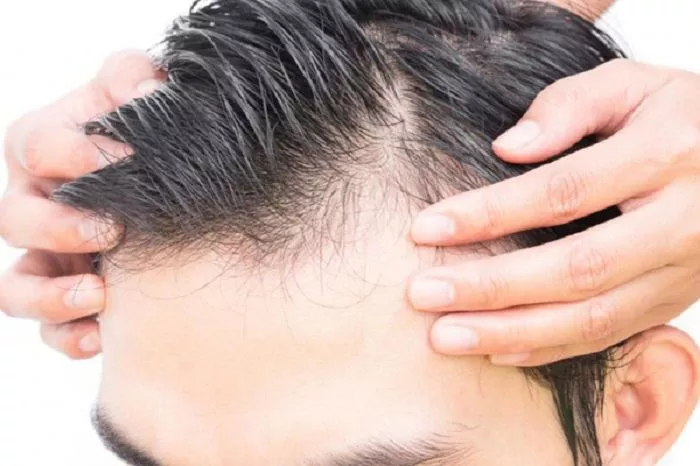Undergoing a hair transplant is a significant decision that can dramatically improve your appearance and confidence. However, understanding what happens after the procedure is crucial for optimal results. This guide provides a detailed breakdown of the recovery process, ensuring you know exactly what to expect after hair transplant surgery.
Immediate Post-Surgery Phase (First 24-48 Hours)
The first few hours after your hair transplant are critical for ensuring proper healing. Here’s what you can anticipate:
Swelling and Mild Discomfort
It is normal to experience some swelling, particularly around the forehead and eyes. This occurs due to the body’s natural response to the surgical process. Your surgeon may prescribe anti-inflammatory medication to minimize discomfort.
Scabbing and Redness
The donor and recipient areas will develop small scabs as part of the healing process. Redness is also common but typically subsides within a few days. Avoid touching or scratching these areas to prevent infection.
Numbness or Tightness in the Scalp
Temporary numbness or a tight sensation is expected because the nerves and tissues need time to recover. This usually resolves within a week or two.
The First Week After Surgery
The initial seven days post-surgery require careful attention to ensure proper graft survival and healing.
Hair Washing Instructions
Most surgeons recommend waiting 48 hours before washing your hair. Use a mild, sulfate-free shampoo and follow a gentle washing technique to avoid dislodging grafts.
Shedding of Transplanted Hair
Don’t be alarmed if the transplanted hairs fall out within 2-4 weeks. This is part of the natural cycle, and new growth will begin in a few months.
Avoiding Strenuous Activities
Heavy exercise, bending over, or lifting weights can increase swelling and blood pressure, risking graft displacement. Light walking is acceptable, but intense workouts should be avoided for at least 10-14 days.
Weeks 2-4
By the second week, most visible side effects start diminishing.
Reduced Swelling and Scabbing
Swelling typically subsides within 5-7 days, while scabs gradually fall off. Do not forcibly remove them—let them detach naturally.
Itching and Dryness
As the scalp heals, you may experience mild itching. A prescribed moisturizing spray can help. Avoid scratching, as this may damage new grafts.
Resuming Daily Activities
Most patients return to work within 7-10 days, depending on their healing progress. Sun exposure should be limited, and hats should be worn loosely to avoid friction.
Months 1-3
This period is often called the “ugly duckling” phase because the transplanted hair sheds before regrowth begins.
Temporary Thinning
The scalp may appear thinner as the transplanted hairs shed. This is normal, and new follicles will start growing beneath the surface.
Early Signs of Growth
By the third month, some patients notice fine, new hairs emerging. However, full growth takes longer.
Months 4-6
Hair growth becomes more noticeable during this stage.
Thicker and Healthier Strands
New hairs will appear thicker and darker as they mature. The density improves gradually.
Styling and Haircuts
Once the new hair is strong enough, you can trim or style it. Avoid harsh chemicals or heat treatments until fully healed.
Months 7-12
The full outcome of your hair transplant becomes evident around this time.
Full Hair Growth
By month 12, most patients achieve 80-90% of their final results. The hair looks natural and blends seamlessly with existing strands.
Long-Term Maintenance
While transplanted hair is permanent, maintaining overall scalp health with proper nutrition and hair care ensures lasting results.
Potential Side Effects and How to Manage Them
Though rare, some patients experience minor side effects:
- Shock Loss (temporary shedding of non-transplanted hair)
- Folliculitis (minor inflammation around hair follicles, treatable with antibiotics)
- Temporary Scarring (fades over time)
Essential Post-Operative Care Tips
To maximize success, follow these guidelines:
- Sleep with your head elevated for the first few nights.
- Avoid smoking and alcohol, as they slow healing.
- Stay hydrated to promote faster recovery.
- Follow your surgeon’s aftercare plan meticulously.
Week 1
Swelling peaks around day 3–4, often around the forehead and eyes, but resolves with prescribed anti-inflammatories. Tiny scabs form over grafts; gentle washing begins after 48 hours to avoid dislodging them. Avoid touching, scratching, or strenuous activity to prevent bleeding or infection.
Week 2–3
Scabs naturally flake off by day 10–14. Temporary numbness or itching may occur as nerves heal—use surgeon-recommended sprays instead of scratching. Shedding of transplanted hairs begins, which is normal (the follicles remain intact beneath the skin). Light activities can resume, but avoid sweat-inducing workouts.
Week 4
Redness fades, and the scalp appears more even. Shock loss (temporary thinning of existing hair) may occur but reverses with time. Most patients return to work within 7–10 days, though sun exposure and tight hats should still be avoided.
Long-Term Outlook
New growth typically starts around month 3–4, with full results visible after 12 months. Follow your surgeon’s aftercare plan diligently to ensure optimal density and natural-looking results.Patience is key—the “ugly duckling” phase is temporary, but the payoff is permanent.
Conclusion
Understanding what to expect after hair transplant surgery helps you prepare mentally and physically for the journey ahead. While initial recovery takes a few weeks, full results develop over several months. By following post-operative instructions and maintaining patience, you’ll achieve a natural, fuller head of hair that enhances your confidence for years to come.
Related Topics

